FROM DISNEY'S PORN VAULT, A STORY THAT WILL BRING THE FAMILY TOGETHER, THIS APOCALYPSE. On Amanda Montei's The Failure Age
BY Divya Victor
In which I talk about reading THE FAILURE AGE & Amanda Montei talks about making THE FAILURE AGE
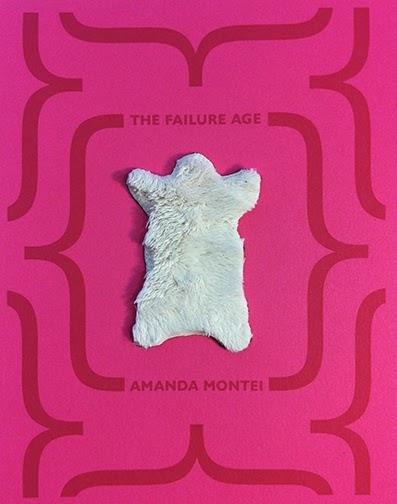
Divya: Reading The Failure Age
There comes a time in every woman’s life when you must finally re-visit the fairy tale that your Mother forgot to tell you at night because she was busy telling you about Benazir Bhutto’s political stratagems. My own catch-up with this happened when I was reading Amanda Montei’s chapbook The Failure Age in a pair of my mother’s PJs held together with binderclips, sitting on a straw mat, near a patch of fresh fertilizer wafting up into the adoring Sunset designed especially for suburban communities in California. I read this during my own Failure Age (the day after I turned 31), which, for the purposes of all neurotics is Every Age of Always OR The Present Apocalypse OR The End of the End of History. Is this when women in sitcoms stop wearing scrunchies and start dating commitment-phobes? Is this when you hear, over and over, as the one woman speaking in a large room, with surprised fingers pointed at you—"Ceci n'est pas une pip-squeak!"
Acknowledging the Failure Age is to admit that you fell asleep before your Mother finished reading the Fairy Tale. This is a matter of cultural education—an exegetic attempt to parse one’s own formation like rooting for a wholesome meal of steak and potatoes after it’s been flushed down: i.e. without nostalgia and with more than a little face-scrunching. This is the reconstructive process into which Amanda Montei plunges boldly, with elbow-length surgical gloves and rubber wading boots (with spurs!). Any worthwhile feminist poetics requires gloves.
This is the scene: A conversation between a man and a woman {[a husband-man and a wifely-lady, to be precise (while he is smoking on a bear-skin rug while she delivers philosophical treatises and applies yogurt <expertly, with admirable finesse> to “his every part”)] all while they both are having what appears to be near-tantric sexual liaisons that could rival the iconic Ghostly/ghastly pottery-wheel edition of Moore V. Swayze of 1990} in an apartment.
Pretty standard, so far, oui?
In fact, this is the Standard—the whole crest with the vulning pelican and the trellis of tears—of hetero-feminine domestic existence by doctrine. Amanda has discovered the mathematical formula of the very jacket cover of EveryRomance that EveryFairyTale was supposed to work its boney scaffolding up to. Fleshing out the story must involve a fair deal of flesh. And it does.
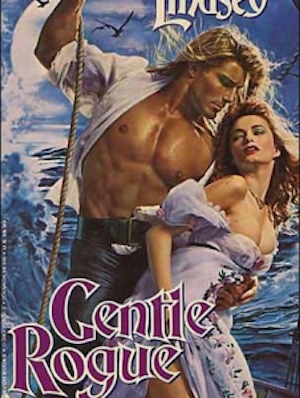
I am taking notes very fast as I read this book, before the sun sets and the dinner table is set and my curls are set and the Jello sets. But all the moisturizer I have to wear to stay supple keeps making my pen slip, and my own husband’s golden locks keep brushing into my eyes (which are like emeralds set in a diamond skull!) which is so distracting, guys!
The protagonist walks the Failure Age as if it was a runway and she was a supernatural, rather than a supermodel. She is a triptych of Ariels—the female embodiment of aspiration—the very breath of ambition, the aerial view—as it were—of the glass ceiling (putting the ass back into it, naturally).
She is, in part, Disney’s Ariel from The Little Mermaid—a footless footloose Princess putting her foot in her mouth, dreaming of ideals while misnaming things snarfblats and dinglehoppers:
She can’t stop thinking about the poem she read. About the girl who gets bleach water thrown on her feet. (They’re cleaning the street?) The poem never addressed what happened to the girl-feet afterwards. Whether they singed right off, or whether they turned all white. He has taken up the violin, and plays it now on the rug. Says the sound of the strings is what he imagines the inside of letting go feels like, though he wouldn’t know. (Aging is hard for him, too.) “What would it be like to walk around with absent feet?” she says. “Would it feel like floating?” He offers nonchalance like an hors d’oeuvre. On a platter. “I’ve always wanted to touch myself in front of you,” she says, and feels something like relief.
She is, in part, Shakespeare’s Ariel from "The Tempest" bound to serve either the silenced and pregnant witch Sycorax (the mater mal, the symbolic bad breast) or bound to serve the unscrupulous slave-master and colonizer Prospero (the papa capital, the symbolic father):
Time passes like an old ship. (Slow and loud.) Mother always said that people all look the same inside when you remove their skin and genitals. Mother always told her to look for the good in everyone. Mother never told her that her girl-hands and girl-feet would disappear. Mother never told her that her feet would feel like absent feet, that life would feel like a tenuous suspension. Mother never told her that they wouldn’t be drinking lemon drops for years, on a steamboat in the Carribean.
She is, in part, Sylvia Plath’s Ariel, weary of obligatory sensuality and exhausted by the relentless objectification that corners her every ambition:
Someday, she will write a poem about a woman who feels like an object, even in the eyes of other women. (Incapable of seeing herself as a person, as a friend, as anything other than sexual, she constantly tries to titillate others, even those she finds repulsive. It’s neoconfessional.)
In the failure age, answers to questions about aesthetics and ethics are written out on the protagonist’s body by her husband like “a tender cunnilingus,” with a wry tongue that grows increasingly dry from licking envelopes stuffed with altruistic missives. Who needs ink when you have cunnilingus?
In the failure age, the husband is often “pointing like he has a Power Point setup or a big pie chart” as he exclaims "‘I am practicing for academia!’ He scratches around down there, pulls out his hand, smells his fingertips.” Abject, fecund, and efficient—a dreamboat, really.
The Failure Age is like the Matrix, if the Matrix was also a slow motion ACTIVA yogurt commercial or a Bob Ross-style Totalitarian-Ecoaesthetics in which one single dude narrates how to plant a pretty rose bush here and a happy little pine tree here. I am terrified of it and also really comfortable here. Never make me leave my bear-skin rug. Never make me give up the chance to say that Amanda has finally returned both pasta and oral to the genre of the Domestic-Pastoral.
Amanda has given me the blueprint for the veritable icon of Postmodern Hetero Living—that wily Betty Crocker subsidiary. She has modeled the domestic conditions of our failure age on the compulsory pragmatist sensualism of REALSIMPLE (bright colors, labels, soft multi-purpose fab fabrics!), the curious sexualization of all commerce by COSMOPOLITAN (clean him into an lemon-scented orgasm!), and the compulsive moralizing of all decorating acts by MARTHA STEWART LIVING.
The New Testament of Condé Nast that one subscribes to (quite literally) has returned to us in full glory, as all doctrine does, through gorgeous distortion and voluptuous parody. The Failure Age rises under a “sky… painted pastel, tumescent with blue-gray mold-fuzz, like the peaches that are dying on the floor” watched over by a “condom-round moon.” The Age’s protagonist, a lithe and deeply ponderous woman who is “so happy” and “never angry” with her husband lies around and watches “poets on blankets” or wades through lily-ponds on her wet “effulgent legs.” She is the beacon of plain speech: “Her loins are wasted. She tells her husband, ‘My loins are wasted!’” She is the beacon of tumultuous and advanced ambiguities. She is a problem to solve (just like Fräulein Maria). The problem, she knows well, is that genre cannot be solved (just like Fräulein Maria). As we are all warned, “When the woman in the story finally finds the moon in Biarritz, she will be blinded by it.” And yet, despite Amanda’s warnings, there I sat in my makeshift Mom-PJs near the fertilizer patch—a fool for this fairy tale in The Failure Age—and so, when the Moon rose on my emerald eyes in my diamond skull, I was, dear reader, blinded by it.
Amanda: Making The Failure Age
When I began these poems I was living in Santa Clarita, a dry over-developed suburb just north of Los Angeles. I was riding the bus a lot. I was a broke graduate student who didn’t have a car (and still am). In Santa Clarita, the buses run few and far between, and it took me about an hour to get anywhere, even if it was a ten-minute drive. So I used to read poetry on the bus. I was taking a seminar with Jen Hofer, her tiny-press practices course. I had these beautiful handmade or photocopied chapbooks and magazines I would carry around in my purse and flip through on the bus. This was probably the first time in my life when I was reading nonstop, really all the time, so I constantly had lines coming into my head, and I’d write them in my little notebook on the bus.
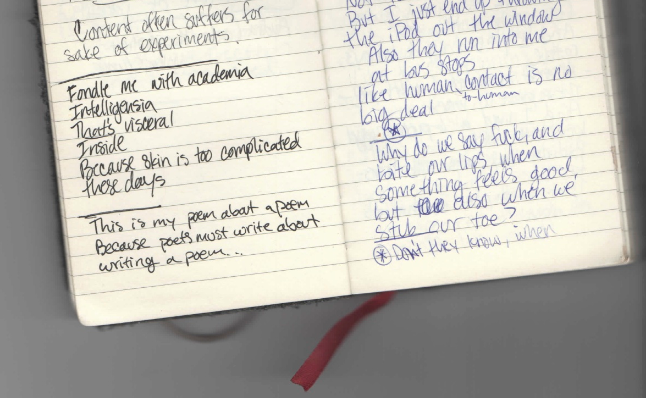
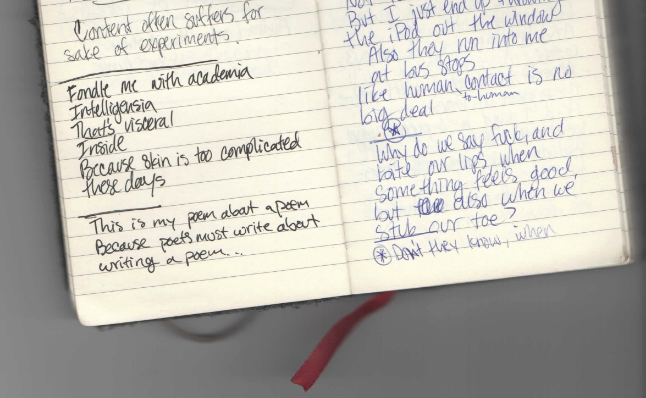
I think writing while in transit like this creates a very unique kind of poem. Not just because of the people watching—my mother always loved “people-watching,” I get this voyeuristic tendency from her—but because there’s something very different about writing while your body is in motion. When you sit down to write, to make a thing, there is too much intention, linearity, and stability.
Writing while in transit is to me about tracking a body’s ephemeral interactions, a body’s encounters with space and affective vibrations. I wrote a lot of weird lines during that time. I was just trying to fit strange phrases and thoughts together and into me. I was also reading a lot of Chelsey Minnis, as I’m sure many young girls in graduate school were at the time, and her poems always feel to me really jerky and halting in the best way. Like a broken girl-robot awkwardly trying get inside a tiny space or yell at someone about how she feels. Like someone who can’t get their mind or their body to move smoothly. Her poems are not just jarring, in the sense of being surprising, they actually upset normative patterns of bodily movement, the cleanliness of the line, and you have to take in that really conjectural-meets-clumsy-intrepid way of being just to read them. In this way, they work a rhythmic disjunct that has no use for enjambment. A lot of that influence remains in the poems, even though the lines I wrote then were later folded into prose blocks.

When I really got to work on the making of the poems, I had moved to Echo Park and was living with an artist and writer in a 300 square foot apartment. The claustrophobia of this love really inspired the form of these poems. We were both studying and creating and teaching and engaging heavily with the LA lit scene, which is backboned by Teresa Carmody & Vanessa Place’s feminist press and their intimate relational poetry events.
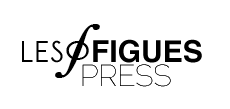
When not in public, there was a lot of theoretical musing happening between two very often naked bodies in a small space, bodies that also ate and shat and aged, and the proximity of desire and disgust really informed my piecing together of these poems. Sex and thinking with others are both terribly intimate, abject processes.
There is of course a strain of autobiography in that sense, as there always is in my work, insofar as this is writing about self and life. I was writing a memoir-novel while writing these poems, working with Janet Sarbanes and Maggie Nelson at CalArts. I read Patti Smith’s Just Kids in a seminar with Maggie, and I remember her saying something about how the book captured two young artists struggling to survive. My life was a lot like that at the time (and still is).
Later, I became obsessed with how punctuation alters the very corporeal experience of reading. I think punctuation is generally under-utilized in poetry. I’m reminded of Theresa Cha’s piece in Dictee that spells out the signifier of each punctuation mark—ie period this is an example colon quotation mark hi period quotation mark
Cha’s work is so attentive to how punctuation polices the body, and of course this disciplining function of punctuation and grammar has even greater ramifications for those inculcated into another language at a young age. Many poets just do away with punctuation, but of course enjambment and composition by field and language poetry have all in different ways explored alternatives to the limit of the sentence. I became interested in how excessive punctuation might be used to disrupt and disjoint internal patterns in the reader. For this project, rather than dismantle language or narrative, or translate my own breath patterns, I wanted to invite the reader sideways into the sentence, and, yes, the narrative. This was to me very related to the kind of work Alice Notley and others have done for the feminist epic and autobiography, which ideally revises both patriarchal narrative tropes/histories and patriarchal language structures.

In every way, Bloof is the ideal home for this chapbook. Shanna Compton and Bloof have done and continues to do so much for the small press community, and these poems were certainly inspired by many small press poets. Shanna also understood how central the bearskin rug has always been to these poems, and gave the chapbook a fury cover. What else could I ask for.
Reading List for the Making of The Failure Age
- 6 x 6 Magazine Issues 15 & 19
- “Men in the News” #1, #26, #34, & #36
- Acker, Kathy. Blood and Guts in High School.
- Brazil, David. Spy Wednesday.
- Carson, Anne. The Autobiography of Red.
- Cain, Amina. I Go To Some Hollow.
- Cha, Theresa Hak Kyung. Dictee.
- Giffin, Lawrence. Get the Fuck Back Into That Burning Plane.
- Giscombe, C.S. Here.
- Graeper, Garth, A Park Book and A Park Book 2.
- Hoang, Lily. The Evolutionary Revolution.
- Jones, Amelia. Body Art/ Performing the Subject.
- Lee, Sueyeun Juliette. Mental Commitment Robots.
- Meadows, Deborah. Growing Still.
- Minnis, Chelsey. Zirconia.
- --. Poemland.
- Nelson, Maggie. The Red Parts.
- Notley, Alice. The Descent of Alette.
- --. Mysteries of Small Houses.
- Peou, Sarith. Corpse Watching.
- Perez, Craig Santos. Preterrain.
- Ed. Spahr, Juliana and Young, Stephanie. A Megaphone.
- Sarbanes, Janet. Army of One.
- Scalapino, Leslie. Considering How Exagerrated Music Is.
- Schapira, Kate. Heroes and Monsters.
- Schwartz, Jason Daniel. Chimney Swift.
- Smith, Patti. Just Kids.
- Wagner, Catherine. My New Job.
Amanda Montei holds an MFA from California Institute of the Arts, and is currently a PhD student at SUNY at Buffalo, where she is a Presidential Fellow. She is coeditor of Bon Aire Projects, and editor of the literary journal P-QUEUE. She is the co-author, with Jon Rutzmoser, of DINNER POEMS. Her novel Two Memoirs is forthcoming from Jaded Ibis in 2014. THE FAILURE AGE is the second chapbook in the 2014 series from Bloof Books. Each chapbook in the series will be released in a limited edition of one hundred numbered copies, followed by a digital release.
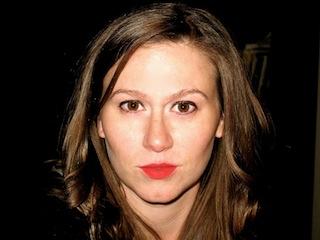
Divya Victor is the author of CURB (Nightboat Books, 2021), winner of the 2022 PEN Open Book Award and...
Read Full Biography

